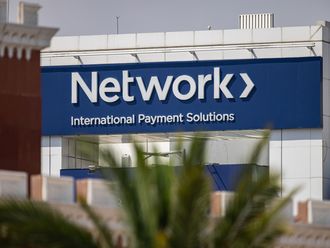
From apps to fully digital banks, customers in the UAE are reaping the benefits of technology. Local and international banks in the country are spending millions of dollars inside and outside branches that will reduce customer stress and put their staff to better use.
As digital transactions grow, lenders are trying to hit the sweet spot in their retail strategy. If the focus is too much on digital banking, the problem is that financial institutions risk alienating consumers who prefer traditional channels such as branches. On the other hand, if there is not enough investment in digital, younger consumers may take their business elsewhere.
“The fate of a banking institution will be determined by the level of insights it has about its customers and the quality of personalised customer experience it is able to provide,” says Subroto Som, Head of Retail Banking Group at Mashreq. “We are living in an economy of experience where people judge everything by the quality and speed of their experience, and the UAE is no different.”
Relevance of mobile
As more customers use their smartphones to do their banking, the relevance of the mobile experience is becoming a crucial aspect of the digital strategy that banks must address, says Som.
“The one-size-fits-all approach in banking does not work anymore.”
Ten years ago, the average customer would visit Mashreq’s branches about 15 times a year, he says. The number of online banking financial transactions through various channels increased from 75 per cent in 2013 to 92 per cent in 2018. Today, close to 70 per cent of non-financial transactions are being carried out digitally, adds Som.
Investment in digital is also reaping benefits for Emirates NBD, Dubai’s biggest bank by assets. “Currently, only 8 per cent of our transactions are conducted face-to-face, and digital transactions [are] increasing by more than 10 per cent year-on-year,” says Suvo Sarkar, Senior Executive Vice-President, Head of Retail Banking and Wealth Management, Emirates NBD. He agrees that digital banking in the UAE and the region is fast moving towards a mobile-first platform, driven by high smartphone penetration and a growing millennial population.
“Our mobile active customers have now equalled online active and continues to grow faster, with total number of logins and transactions on mobile crossing that of online last year,” Sarkar says.
So will conventional retail banking in branches become a thing of the past? In a region where banks often pride themselves on the size of their branch networks, there is a transformation slowly taking place.
“There is still a large but shrinking segment of the market that prefers traditional channels,” says Saeeda Jaffar, Managing Director of consultancy Alvarez & Marsal’s Dubai office. “We expect that in the future banks will offer a blended omnichannel experience that blends traditional and digital channels that complement each other.
“We are already starting to see that high-volume, low-complexity transactions such as payments are increasingly driven through digital channels, while low-volume, high-complexity transactions tend to require some human intervention.” While digital will be the core of retail banking in the future, customers want human interaction too, says Som.
“Branches will continue to play an important role, albeit a different one. Clients will continue to value human interaction, especially with regard to complex financial transactions.”
Research by Alvarez & Marsal has shown that at least for now, customers in the Middle East and North Africa tend to trust banks that have a physical presence and back a known bank brand more than those that are purely digital. “This may change over time, but for now is an important sentiment,” says Jaffar.
She expects the role of branches to shift from transaction centres to advisory centres. “Day-to-day transactions will be pulled out of the branches, and higher value-added services such as sales or advisory will be retained.”
Role of branches
The shape of branches will also change. There will be fewer branches overall, but the ones that remain will be large, more customised and cost-effective, with a heavy component of technology to modernise their look and feel, explains Jaffar.
Emirates NBD is enhancing its branches to make them more digitally enabled and service-focused via intuitive self-service stations and friendly service ambassadors, says Sarkar.
Som credits technology for its role in helping Mashreq transform the branch banking experience. “Banks that hope to prevail must pursue digital simplicity, where customers choose the channel according to their convenience, but quality of interaction and ease of operations must remain the same.”












